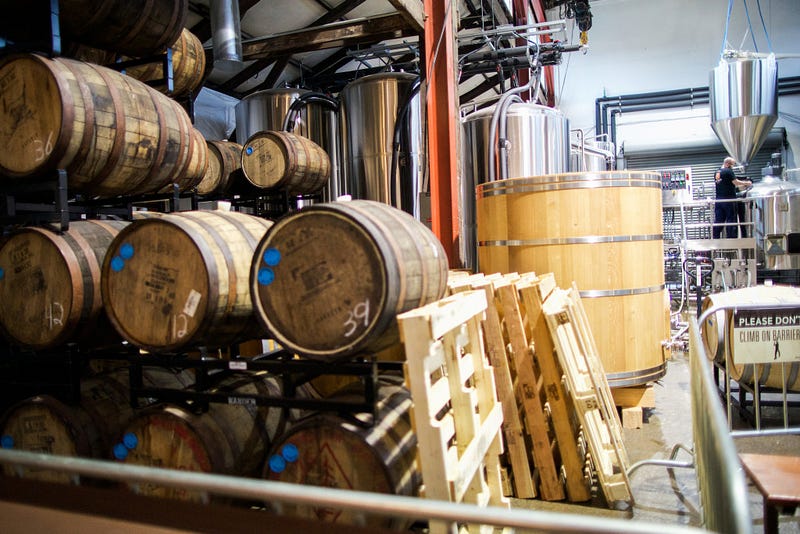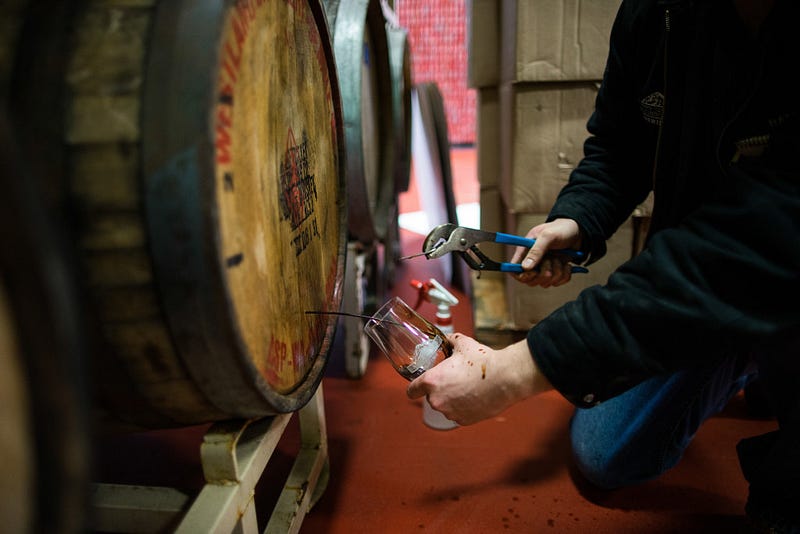Old Traditions Foster New Flavors
Bellingham brewers craft new ales with old barrels, using even older traditions
STORY AND PHOTOS BY ALEX BARTICK
Brewers have stored and aged beer in barrels for hundreds of years.
This method is lesser known, however, as the creation of stainless steel in the early 20th century meant beer production around the world switched from wood to stainless steel.
Most brewers use stainless steel; it is less expensive, less risky and yields greater quantity of beer in a smaller amount of space.
Nowadays, craft brewers are now going back to the barrel for a creative approach to producing and enhancing flavors in the crafts they brew. Almost any beer can be aged in barrels, but the best beers to age are those with high alcohol by volume, a heavy body and strong flavor.
An oxidation process occurs in barrels that can ruin lighter beer with lower alcohol content, but may enhance the flavors of heavy-bodied brews such as stouts or porters.

Wood is porous, allowing air to flow in and out of the barrels, causing the oxidation. Normally, brewers don’t want their beer to oxidize, because it can ruin the beer. But at times, the process of oxidation can cause a beer to take on a unique flavor from the barrel.
The most common type of barrels used for aging beer are oak whiskey barrels. The smoked flavor of the barrel complements the malt used in darker beers such as stouts and porters. The end result is a rich, sweet flavor.
Barrels used by breweries are bought from distilleries and wineries. Distillers can only use the barrels once and they become surplus thereafter. They are then sold to breweries at an average cost of $200 to $500.
The high price of barrels is one of the reasons barrel brewing tends to drive the price of the brew up. Beer is typically aged in the barrel for a year or two. After two or three batches the barrel will lose its flavor.
Breweries usually have to buy extra space for the barrels as well, or use space that could otherwise hold stainless steal brewing tanks to brew more beer by volume. Because of the expense of the barrels, the long aging time and the need for extra space breweries tend to only age a few barrels at a time, or none at all.
But some believe it is worth it.
Chad Kuehl, head brewer at Wander Brewing in Bellingham, chose to start the Wander Barrel Project (WBP) because there wasn’t much barrel-aged beer being produced in the area.
The WBP takes up about 15 percent of their total brewing space. Space that Kuehl says could hold two or three stainless steel tanks. They could be turning over more beer at a quicker pace without the barrels, but the project is important to their craft.
While Bellingham’s Kulshan Brewery does not have a barrel project, they do barrel brew a special batch, allowing them to put a keg or two on tap for customers.Kulshan brewer Nate McLaughlin helps manage the two-dozen barrels they do have. His passion is evident in the energy and patience he puts into his work and the confidence he shows when moving around the machinery.

“Each barrel has its own personality and challenges when it comes to the blending process,” McLaughlin says. “Barrel brewing is difficult and expensive. But, in the end, when a great product is on tap or in bottles, it’s the best feeling in the world.”
McLaughlin has experimented with barrel brewing since he started in the craft beer industry five years ago. He says the reason Kulshan decided to invest in a few barrels was simple: the flavor is unique.

Barrel brewing beers has allowed breweries to bring an old tradition back to life. The romantic look of the barrels and the aroma from the wood evokes the old traditions of brewing and creates a distinctive atmosphere at the brewery. The art has also allowed brewers to bring life back to the barrels and approach brewing beer in a more creative and inventive way.
